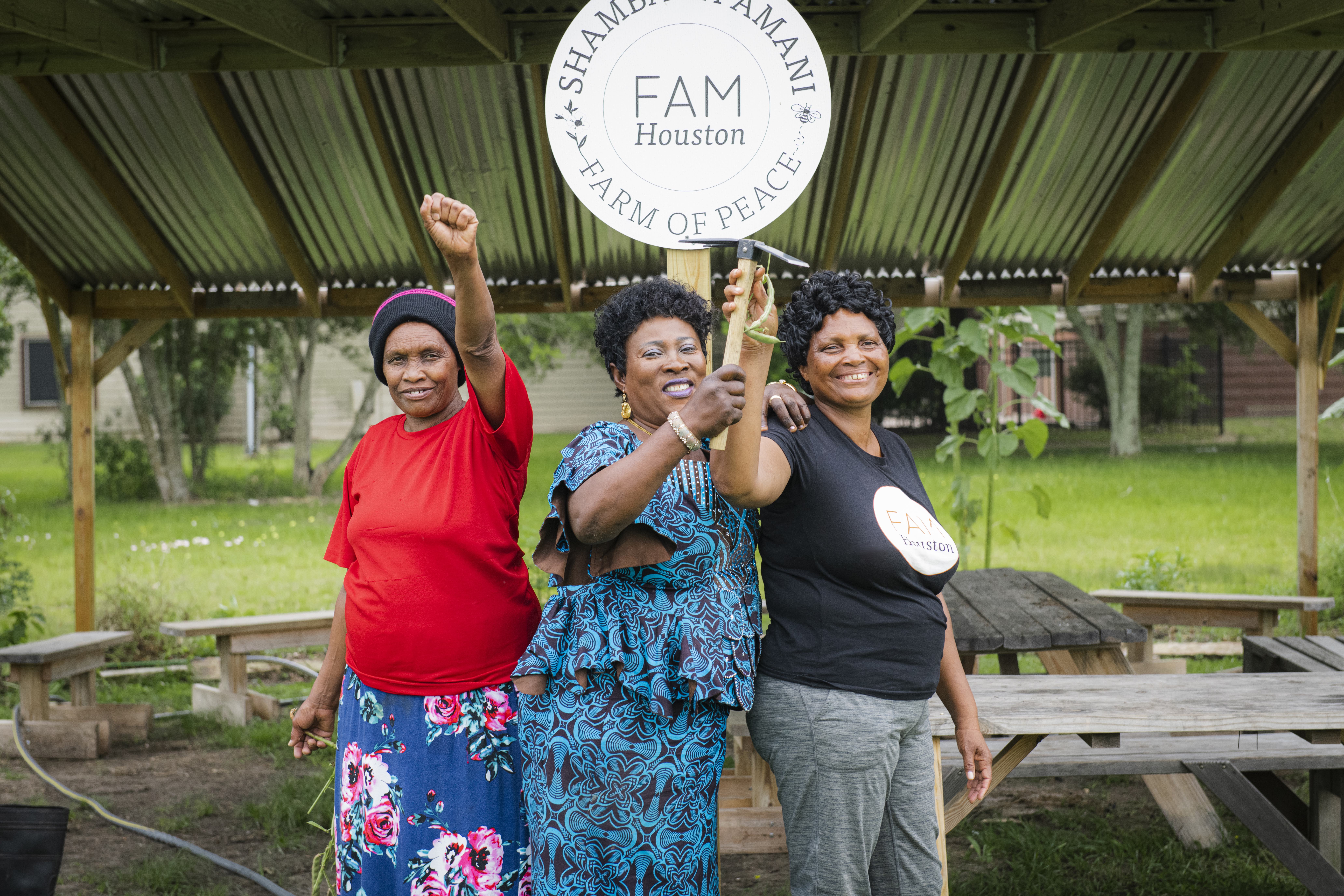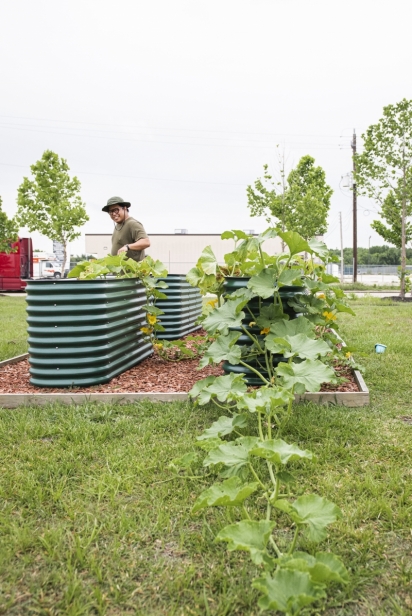Home Away from Home
Those, like me, who are from Alief are proud to be from Alief. Pop stars, James Beard Award nominees, athletes and even a top comedian who set his popular Netflix series there boldly announce being from this quaint little community on the southwest side of Houston. As someone who grew up there, I get it. Alief hums with an energy that is so special yet so natural. It’s not trying to be anything other than what it is: home.
But who calls it home? On Wikipedia, it’s touted as a “working class suburb,”but it’s more than that. Alief boasts one of the most diverse populations in a city that ranks as one of the most diverse in the nation. To paint a picture, I, a Filipino immigrant, lived on a street with Vietnamese, Nigerian, Salvadorian, Pakistani and Mexican neighbors — and that’s just one block. It was normal to shop at Viet Hoa, a Vietnamese grocery store, one day and La Michoacana, a Mexican meat market, the next. I grew up swapping lumpia for tamales during the holidays and jollof for my mom’s pancit on the weekends.
That inimitable zeitgeist and understanding that I was lucky to grow up with was a beautiful thing; and something that is particularly alive in a special plot of land nestled off the corner of Dairy View and Beechnut. That land plays host to three organizations whose missions are to make sure the individuals that call Alief home are nourished, encouraged and fed.
Alief Community Garden
Founded in 2011, Alief Community Garden is a volunteer-led project that is helmed by Barbara Quattro. Still a leader in the community at almost age 80, Quattro is a West Virginia native who later called Alief home. She is a lifelong volunteer committed to leaving the world better than she found it. Her mission grows as the garden grows. Alief Community Garden began with 15 5-foot-by-25-foot raised beds and today has over 90.
Each garden plot belongs to and is independently maintained by people who live in Alief. Many are immigrants from every corner of the world. In one plot, Vietnamese gardeners grow basil, lemongrass and mint. In another, Burmese families are growing elongated opo gourds for their trademark mohinga, a fish stew made with the mildly flavored squash and fermented vermicelli noodles.
“It really is something that you just see people from different backgrounds — from Africa, from Vietnam, from Latin America, native to the States — just sharing their vegetables and what they cook with them. It's just remarkable,” says Natali Hurtado, executive director of the International Management District.
IMD is what powers the Alief Community Garden, providing volunteers with the resources to help grow the program both literally and figuratively. This support has allowed the garden to also give a home to Alief Art House and FAM Houston’s Shamba Ya Amani.
IMD is a political subdivision created by the state legislature. Its goal is to “provide economic development to an area that was either blighted or going on a downward track,” says Hurtado, an Alief native herself. The organization collects 10 cents for every $100 valuation on commercial properties and reinvests that money in the community. “We don't want people to worry about their plants dying. If FAM Houston, Alief Art House, or the gardeners that have their raised beds need anything, we provide all of the bigger things like electricity and water. We're here to support them with that.”
IMD partnered with Urban Harvest, a Houston organization that provides community garden support, educational programming and manages popular farmers markets, to help them properly set up their first raised bed system. They also collaborated with the University of Houston’s College of Architecture and Design to build a pavilion for students of neighboring schools to enjoy. In recent years, they have also leaned on Hope Clinic, a facility offering patients healthcare no matter language or financial barriers. Together, they built permanent Chinese checkers stations to encourage intergenerational activities among neighbors. Two partnerships, Alief Art House and Shamba Ya Amani, have even taken up permanent residency on the sprawling 6-and-a-half-acre property.
Alief Art House
“To me, Alief is just this amazing part of Houston that is bringing together art and the food scene,” says Hurtado. In 2019, IMD partnered with Matt Manalo to develop Alief Art House. “I feel like Matt was what we needed for that art component,” she says.
“I feel like I didn’t experience a big culture shock. Everyone basically looked like me and I didn't feel othered,” Manalo says about settling in Alief with his family after immigrating from the Philippines. His love for his new home is what brought him back years later to launch Alief Art House. His goal is to create a hub for creativity, especially for immigrants with backgrounds like his own.
On the surface, it’s a colorfully graffitied shipping container resting on the grounds of the Alief Community Garden, but the space serves as much more. The container itself has acted as a studio, a gallery and a home to collaborative art projects for the neighborhood. It recently received enough support to double its footprint. With the additional space, Manalo’s organization has planted a vegetable garden that grows vegetables and fruit for both art and sustenance. It was recently the setting for an intimate vegan Filipino food tasting.
Manalo wants the site to be a beacon of hope for young students from immigrant and minority families who want to pursue art but don’t have the support to do so. “I was an immigrant with unique stories to tell, I felt like there needed to be a space where others could do the same through art,” Manalo explains.
Like Manalo, I came to America from the Philippines at a young age. I often felt “too Filipino” and at the same time “not Filipino enough.” It wasn’t until connecting with other immigrants like Manalo later in life, that I understood this to be a common experience among us. A young artist expressing their diasporic stories and struggles in a place such as Alief Art House can be an opportunity to connect with others like themselves, while also developing a wider audience that may lead to a deeper understanding of each other.
Manalo also expresses that, “One of the main goals of the space is to show these communities that to be an artist can be sustainable. If we're showcasing a student and they get paid to showcase their work, there's something so liberating about that.”
Sustainability is a theme running throughout Alief Art House. The Alief Art Garden is working with The WOW Project, which is fighting poverty in underserved areas with community fridges that provide fresh food to people for free. Together, they started a garden where they grow food to eat and create art with. “As an artist, it’s our responsibility to make spaces beautiful, but it's also important that we think about the spaces that we interact with so we strive to make our practice more sustainable because a lot of the materials that [artists] use can be harmful for the planet,” says Manalo. The goal is to utilize what’s grown from the garden for materials or as inks and dyes. “If we can use black beans as ink, that’s even better.”
FAM Houston's Shamba Ya Amani (Farm of Peace)
The third group to call this stretch of Alief home joined at the dawn of the pandemic and has sowed seeds of inspiration for both their farmers and the community. FAM Houston, which supports refugees and immigrants, was searching for a place for their refugee women’s empowerment group to grow fresh produce. So, they approached Alief about extra land in the community garden. Hurtado and her team welcomed them with open arms. “I told them we have a lot of land, y'all are welcome, and now it's beyond what I thought would have happened,” she says.
The original idea was to find a small plot for their community of resettled refugees, primarily Congolese women, to grow produce and make a little income as their children attended nearby schools. “Then we found this land and it kind of just opened up the vision for what could be, so we named the land Shamba Ya Amani, which means ‘farm of peace’ in Swahili,” shares volunteer turned farm manager, Kim Meyer.
Each woman tends her own dedicated raised beds with the help of volunteers and is able to make an income by selling veggies to friends and at local markets. The women are also able to nourish their own families with what they grow.
The program continues to add ways to help their farmers gain new skills. Meyer has added a fast-growing apiary program. FAM Houston partnered with Bee Mindful from Austin to set up hives on the property and has even installed hives at the Houston Botanic Garden, who now fund the program and support the apprentices.
Through their efforts at the garden, Meyer explains that they’re able to “teach [the refugees] long lasting skills that can help equip them with knowledge that can continue benefiting them.”
Not only have these refugees found a community, they’ve found a new home in Alief. “We feel like we really fit into the dynamic and area. It's kind of a magnet for people who will wander onto the farm from the surrounding neighborhood,” Meyer fondly shares. “I can't tell you how many conversations I've had where people tell me about their grandfather's farm in India and the bitter melon that they're growing in their backyard that their father used to grow. This Nigerian woman the other day was excited about the fact that we'll be growing okra that reminded her of a specific okra from her country.”
It’s this exchange of culture and understanding of a home away from home that ties these three gardens and all of Alief’s inhabitants, both new and old, together. My friends and I who grew up in Alief embracing one another’s cultures and inviting each other into our completely unique families are grown up now. As our horizons have broadened, we’ve come to realize that what we have in our little corner of Houston is something that not everyone had the privilege of growing up with. The people of Alief have this genuine connection and eagerness to share that transcends languages and allows so many to call Alief theirs and actually mean it. As Kim Meyer shares, “It just feels like we fit into that ecosystem that is Alief and it just feels very much like home.”
For more information, visit Alief Community Garden at facebook.com/AliefCommunityGarden, Alief Art House at mattmanalo.com/aliefarthouse, and Shamba Ya Amani at famhoustontx.org/shamba-ya-amani.







